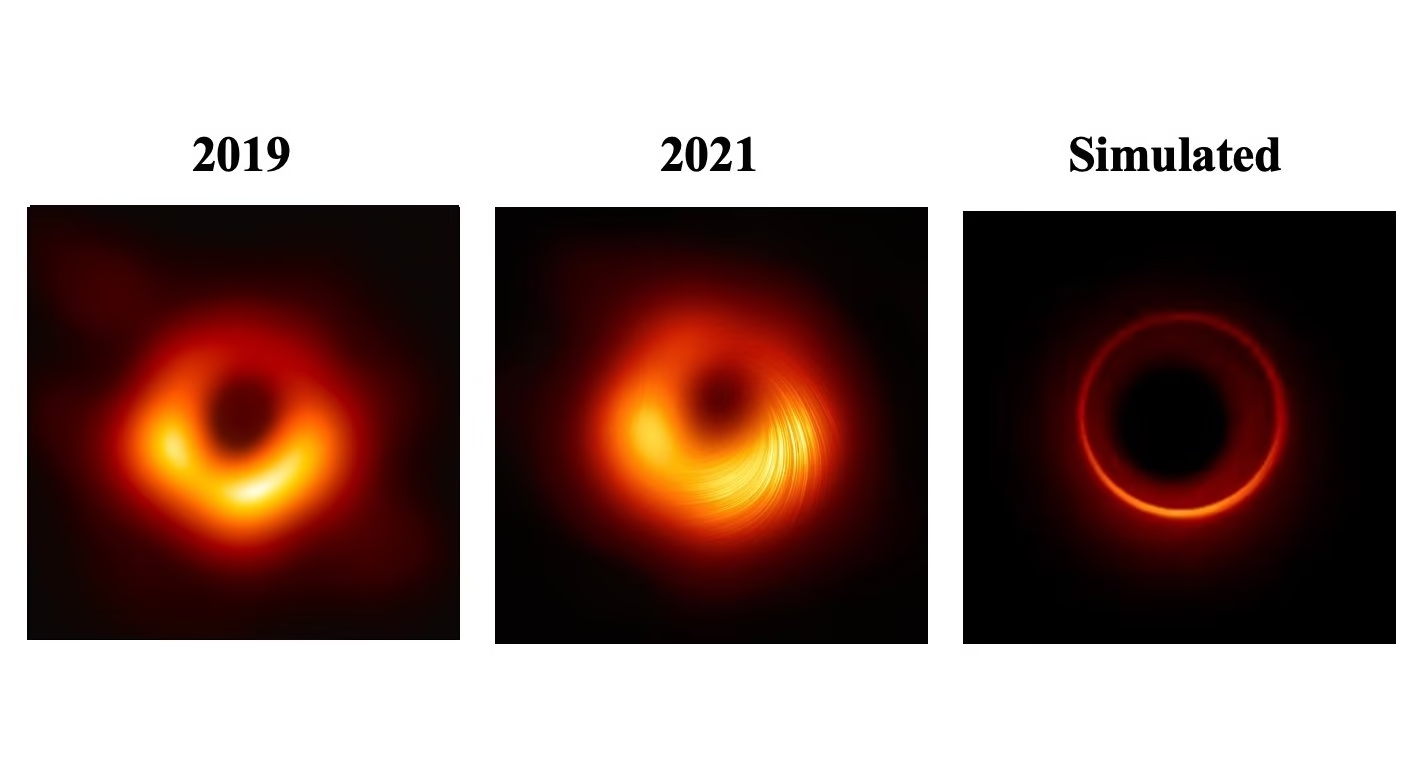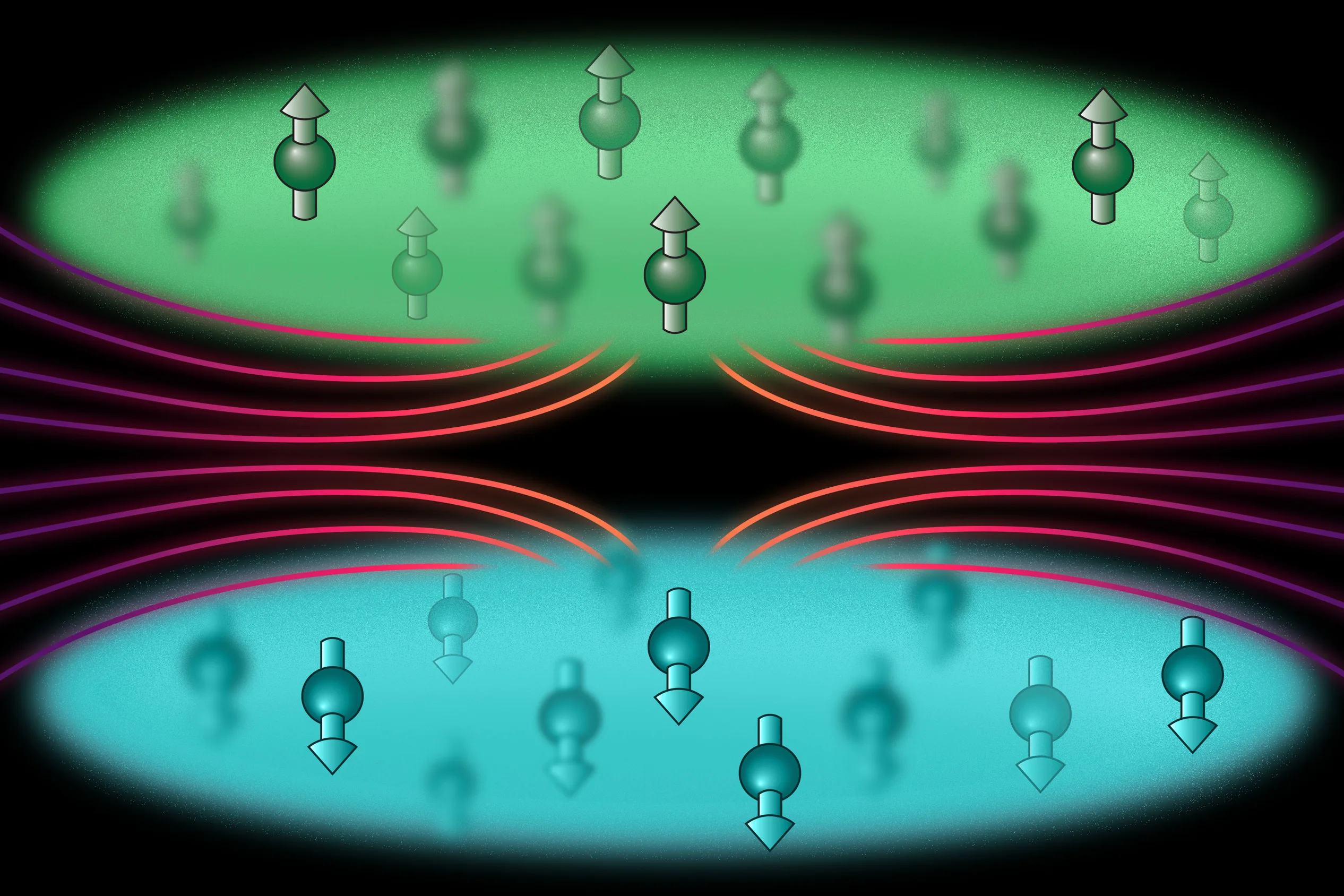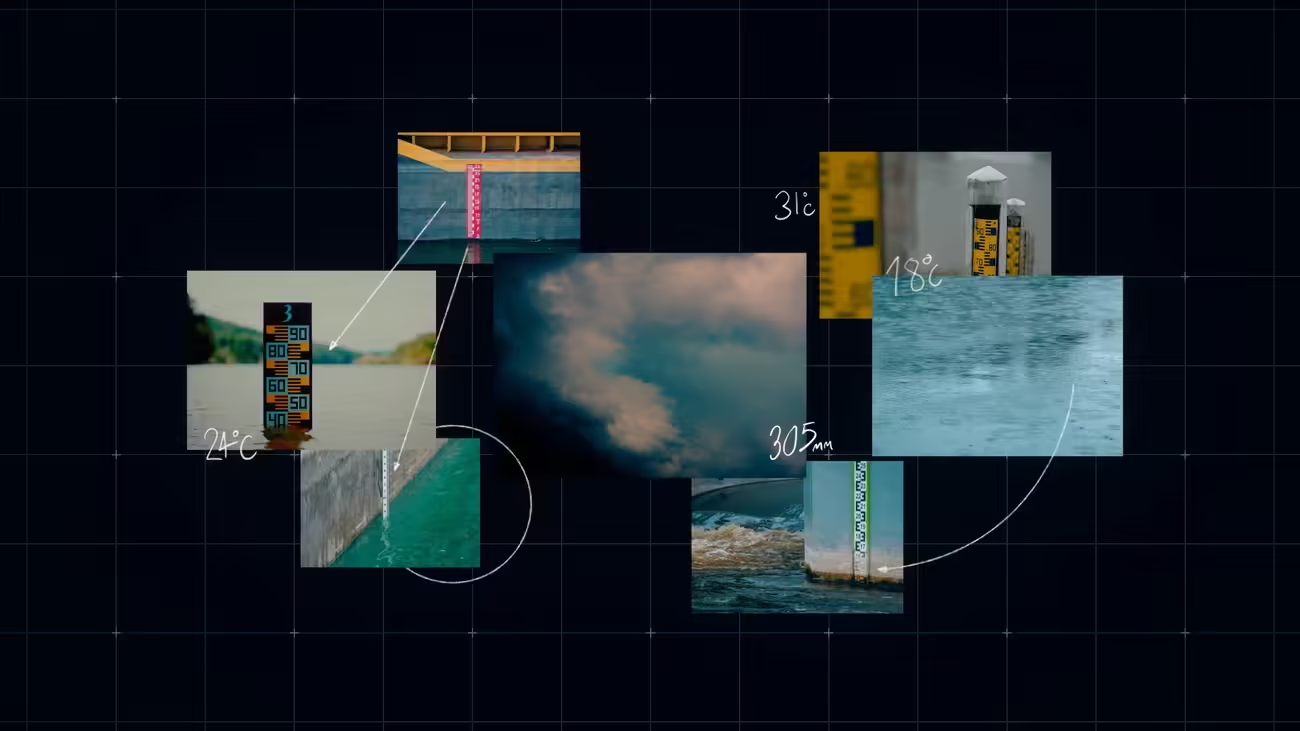In April 2019, a team of astronomers from around the globe amazed the world by unveiling the first-ever image of a black hole—a colossal mass of collapsed stars and gas that allows nothing to escape, not even light. This image depicted the black hole at the center of a galaxy known as Messier 87 (M87), showcasing glowing gas surrounding the black hole’s core. In March 2021, the same team released another stunning image illustrating the polarization of light around the black hole, revealing its magnetic field.
The « camera » responsible for capturing these images is the Event Horizon Telescope (EHT), which is not a single instrument but rather a network of radio telescopes located worldwide. These telescopes work together to produce high-resolution images by combining data from each individual telescope. Currently, scientists are looking to expand the EHT into space to gain an even clearer view of the M87 black hole. However, creating the sharpest images in the history of astronomy poses a challenge: transmitting the massive data set from the telescope to Earth for processing. A small yet powerful laser communication payload (lasercom), developed at MIT’s Lincoln Laboratory, operates at the high data rates necessary to image the intriguing aspects of the black hole.
Extending Baseline Distances into Space
The EHT created the existing images of the M87 black hole using interferometry, specifically very long baseline interferometry. This technique collects light as radio waves simultaneously with multiple telescopes positioned at different locations around the globe, then compares the phase differences of the radio waves at these locations to pinpoint the source’s direction. By taking measurements with various combinations of telescopes worldwide, the EHT collaboration, which included members from the Harvard-Smithsonian Center for Astrophysics (CfA) and MIT Haystack Observatory, essentially created a telescope the size of Earth to image the incredibly faint black hole 55 million light-years away from Earth.
With interferometry, the larger the telescope, the better the image resolution. Therefore, to focus on even finer features of these black holes, a larger instrument is needed. The details astronomers hope to resolve include the turbulence of gas falling into a black hole (which leads to matter accumulation on the black hole through a process called accretion) and the shadow of a black hole (which could help determine where the jet from M87 derives its energy). The ultimate goal is to observe a photon ring (the point where light circles closest before escaping) around the black hole. Capturing an image of the photon ring would allow scientists to test Albert Einstein’s theory of general relativity.
The Black Hole Photon Ring
Video: Black Hole Explorer
With ground-based telescopes, two telescopes cannot be farther apart than on opposite sides of the Earth, approximately 13,000 kilometers apart. Besides this maximum baseline distance, Earth-based instruments are limited by the atmosphere, making it difficult to observe shorter wavelengths. The atmospheric limitations of Earth can be overcome by extending the EHT baselines and placing at least one of the telescopes in space, which is precisely what the CfA-led project Black Hole Explorer (BHEX) aims to do.
One of the most significant challenges of this space concept is data transfer. The data set used to produce the first EHT image was so large (totaling 4 petabytes) that the data had to be stored on disks and shipped to a facility for processing. Gathering information from an orbiting telescope would be even more challenging; the team would need a system capable of linking the space telescope’s data to Earth at about 100 gigabits per second (Gbps) to image the desired aspects of the black hole.
Enter TBIRD
This is where Lincoln Laboratory comes in. In May 2023, the lab’s TeraByte InfraRed Delivery (TBIRD) lasercom payload achieved the fastest data transfer from space, transmitting at a rate of 200 Gbps—which is 1,000 times faster than traditional satellite communication systems—from low Earth orbit (LEO).
The NASA TeraByte InfraRed Delivery (TBIRD) Lasercom Demonstration Completes Its Mission
Video: MIT Lincoln Laboratory
« We have developed a new technology for transporting large volumes of data from space to the ground, » explains Jade Wang, deputy director of the Optical and Quantum Communications Group at the lab. « In developing this technology, we sought collaborations and other potential follow-on missions that could leverage this unprecedented data capability. BHEX is one such mission. These high data rates will allow scientists to image the structure of a black hole’s photon ring for the first time. »
A lasercom team led by Wang, in partnership with the CfA, is developing the long-distance, high-rate downlink needed for the BHEX mission in medium Earth orbit (MEO).
« Laser communications are completely transforming our expectations for possible astrophysical discoveries from space, » says Michael Johnson, an astrophysicist at the CfA and principal investigator of the BHEX mission. « Over the next decade, this incredible new technology will bring us to the edge of a black hole, creating a window into the region where our current understanding of physics breaks down. »
While TBIRD is incredibly powerful, the technology requires some modifications to support the higher orbit needed for BHEX’s scientific mission. The small TBIRD payload (CubeSat) will be upgraded to a larger aperture size and higher transmission power. Additionally, the TBIRD automatic repeat request protocol—the error control mechanism ensuring data arrives on Earth without loss due to atmospheric effects—will be adjusted to account for the longer round-trip times associated with a MEO mission. Finally, TBIRD LEO’s « buffer and burst » data delivery architecture will transition to a streaming approach.
« With TBIRD and other lasercom missions, we have demonstrated that lasercom technology for a scientific mission of this magnitude is available today, » Wang stated. « Having the opportunity to contribute to a truly exciting area of scientific discovery is an exciting prospect. »
The BHEX mission concept has been in development since 2019. Technical and conceptual studies for BHEX have been supported by the Smithsonian Astrophysical Observatory, NASA’s Goddard Space Flight Center internal research and development program, the University of Arizona, and the ULVAC-Hayashi Seed Fund from the MIT-Japan Program of the MIT International Science and Technology Initiatives. BHEX lasercom studies have been supported by Fred Ehrsam and the Gordon and Betty Moore Foundation.



